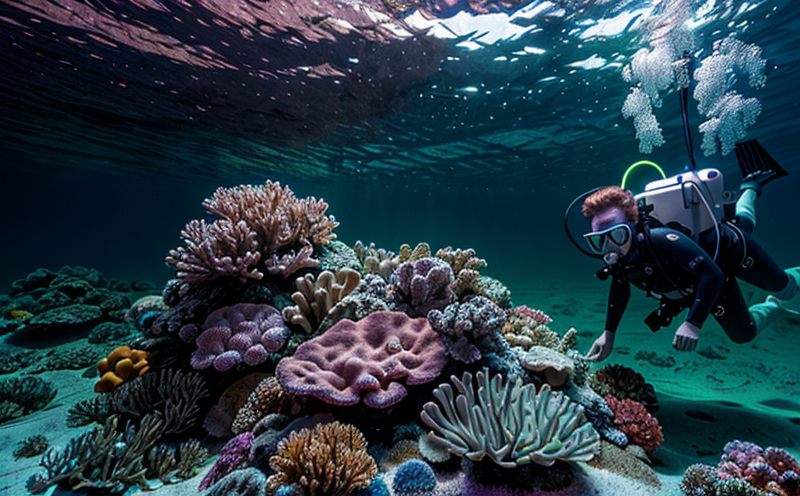EN 50102 Mechanical Impact Testing of Marine Lighting Fixtures
The EN 50102 standard is a European Norm that specifies the method for mechanical impact testing of marine lighting fixtures. This service ensures that the fixtures meet stringent durability and safety standards, essential for their operation in harsh maritime environments.
Marine lighting fixtures must withstand severe conditions such as saltwater exposure, vibration, and shock. The EN 50102 test simulates these real-world stresses to verify that the fixture can perform reliably under operational conditions. This is critical for ensuring safety at sea by preventing failures that could compromise navigation or lead to accidents.
The mechanical impact testing involves applying a series of controlled impacts to the fixtures using specified weights and drop heights. The test apparatus includes a pendulum hammer that strikes the fixture, replicating potential hazards like collisions with debris or other vessels. Compliance with this standard ensures that marine lighting fixtures are robust enough to endure these challenges.
Proper specimen preparation is crucial before testing. The fixtures should be cleaned and dried thoroughly, then mounted in a position representative of their intended use. This ensures accurate test results reflecting real-world conditions. Once prepared, the fixtures undergo rigorous impact tests that simulate potential environmental stresses they might encounter during operation.
The EN 50102 standard is widely recognized for its stringent requirements, ensuring high-quality lighting solutions in marine environments. Compliance with this standard not only enhances safety but also contributes to regulatory compliance and brand reputation. By adhering to these standards, manufacturers can demonstrate their commitment to producing reliable and safe products.
The importance of mechanical impact testing cannot be overstated for marine applications. It helps identify potential weaknesses in the design or manufacturing process early on, allowing for necessary adjustments before production begins. This proactive approach ensures that only robust fixtures reach the market, thereby enhancing overall maritime safety.
Why It Matters
The importance of mechanical impact testing in marine lighting cannot be overstated. In a marine environment, fixtures are subjected to extreme conditions that can cause significant damage or failure. These conditions include exposure to saltwater, high humidity levels, and constant vibration due to the vessel's motion. The EN 50102 standard provides a robust framework for evaluating how well these fixtures withstand such challenges.
By subjecting marine lighting fixtures to controlled mechanical impacts, we can assess their durability and resilience under conditions that mimic real-world scenarios. This testing ensures that the fixtures remain functional and safe even after encountering potential hazards at sea. The results of this test are critical for ensuring maritime safety, as non-compliant fixtures could lead to navigation errors or accidents.
Additionally, compliance with EN 50102 is often a requirement for regulatory bodies worldwide. Meeting these standards not only enhances the reputation of manufacturers but also ensures that their products meet international quality benchmarks. This can translate into increased market confidence and broader acceptance in global markets.
In summary, mechanical impact testing is essential for marine lighting fixtures as it guarantees durability, reliability, and safety under harsh environmental conditions. It plays a pivotal role in ensuring the integrity of maritime navigation systems, thereby contributing to overall maritime safety.
Scope and Methodology
The scope of EN 50102 mechanical impact testing is specifically tailored to marine lighting fixtures. This includes evaluating how these fixtures handle various types of mechanical impacts that they might encounter in their operational environment.
The methodology involves subjecting the fixtures to a series of controlled impacts using a pendulum hammer. The test apparatus ensures precise replication of potential hazards such as collisions with debris or other vessels. Each impact is measured and recorded, providing detailed data on how well the fixture withstands these stresses.
Before testing begins, proper specimen preparation is critical. This involves cleaning and drying the fixtures thoroughly, then mounting them in positions representative of their intended use. This ensures that the test results accurately reflect real-world conditions. Once prepared, the fixtures undergo rigorous impact tests designed to simulate potential environmental stresses they might encounter during operation.
The acceptance criteria for EN 50102 testing are stringent and include specific guidelines on the acceptable limits of damage or deformation after each impact. These criteria ensure that only robust fixtures pass the test, thereby enhancing overall maritime safety. Compliance with these standards not only enhances product reliability but also contributes to regulatory compliance and brand reputation.
In conclusion, the scope and methodology of EN 50102 mechanical impact testing provide a comprehensive framework for evaluating marine lighting fixtures' durability and resilience under harsh environmental conditions. This rigorous approach ensures that only robust fixtures reach the market, thereby enhancing overall maritime safety.
Industry Applications
| Application | Description |
|---|---|
| Vessel Navigation | Mechanical impact testing ensures that marine lighting fixtures remain functional and safe during navigation, preventing potential accidents. |
| Offshore Oil Platforms | The robustness of the fixtures is crucial for maintaining safety in offshore operations, where mechanical stress can be significant. |
| Cargo Ships | Ensures that cargo ships have reliable lighting systems capable of withstanding harsh conditions and potential impacts. |
| Liquid Gas Carriers | The integrity of the fixtures is vital for maintaining safety in liquid gas transportation, where mechanical stress can be critical. |
| Passenger Vessels | Mechanical impact testing ensures that passenger vessels have reliable lighting systems capable of withstanding harsh conditions and potential impacts. |
| Fishing Boats | The robustness of the fixtures is crucial for maintaining safety in fishing operations, where mechanical stress can be significant. |
| Research Vessels | The integrity of the fixtures is vital for maintaining safety during research activities in challenging maritime environments. |





